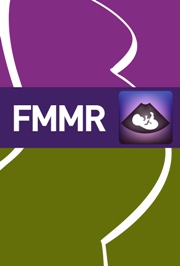Crossref Citations
This article has been cited by the following publications. This list is generated based on data provided by Crossref.
Dietz, Hans Peter
2010.
Pelvic floor muscle trauma.
Expert Review of Obstetrics & Gynecology,
Vol. 5,
Issue. 4,
p.
479.
Dietz, H. P.
2012.
Clinical consequences of levator trauma.
Ultrasound in Obstetrics & Gynecology,
Vol. 39,
Issue. 4,
p.
367.
Cornet, A.
Porta, O.
Piñeiro, L.
Ferriols, E.
Gich, I.
and
Calaf, J.
2012.
Management of Obstetric Perineal Tears: Do Obstetrics and Gynaecology Residents Receive Adequate Training? Results of an Anonymous Survey.
Obstetrics and Gynecology International,
Vol. 2012,
Issue. ,
p.
1.
Schwertner‐Tiepelmann, N.
Thakar, R.
Sultan, A. H.
and
Tunn, R.
2012.
Obstetric levator ani muscle injuries: current status.
Ultrasound in Obstetrics & Gynecology,
Vol. 39,
Issue. 4,
p.
372.
Dietz, Hans Peter
2013.
Pelvic floor trauma in childbirth.
Australian and New Zealand Journal of Obstetrics and Gynaecology,
Vol. 53,
Issue. 3,
p.
220.
Peter Dietz, Hans
and
Guzmán Rojas, Rodrigo
2013.
Diagnóstico y manejo del prolapso de órganos pélvicos, presente y futuro.
Revista Médica Clínica Las Condes,
Vol. 24,
Issue. 2,
p.
210.
Dietz, H. P.
Pardey, J.
and
Murray, H.
2015.
Pelvic floor and anal sphincter trauma should be key performance indicators of maternity services.
International Urogynecology Journal,
Vol. 26,
Issue. 1,
p.
29.
Pereira, Glaucia Miranda Varella
Reis, Zilma Silveira Nogueira
Rodrigues, Beatriz Deoti e Silva
Buzatti, Kelly Cristine Lacerda Rodrigues
da Cruz, Maria Cristina
and
de Castro Monteiro, Marilene Vale
2018.
Association between pelvic floor dysfunction, and clinical and ultrasonographic evaluation in primiparous women: a cross-sectional study.
Archives of Gynecology and Obstetrics,
Vol. 298,
Issue. 2,
p.
345.
Neumann, Patricia
Thompson, Judith
and
Jones, Mark A.
2019.
Clinical Reasoning in Musculoskeletal Practice.
p.
385.
Pereira, Gláucia Miranda Varella
Juliato, Cássia Raquel Teatin
de Almeida, Cristiane Martins
de Andrade, Kleber Cursino
Fante, Júlia Ferreira
Martinho, Natália
Jales, Rodrigo Menezes
Pinto e Silva, Marcela Ponzio
Brito, Luiz Gustavo Oliveira
and
Blasco, Jose María
2021.
Effect of radiofrequency and pelvic floor muscle training in the treatment of women with vaginal laxity: A study protocol.
PLOS ONE,
Vol. 16,
Issue. 11,
p.
e0259650.
Dietz, Hans Peter
2021.
Pelvic Floor Disorders.
p.
89.
Sartorão Filho, Carlos Izaias
Barbosa, Angélica Mércia Pascon
Calderon, Iracema de Mattos Paranhos
and
Rudge, Marilza Vieira Cunha
2022.
Assessment of Pelvic Floor Disorders due to the Gestational Diabetes Mellitus Using Three-Dimensional Ultrasonography: A Narrative Review.
Revista Brasileira de Ginecologia e Obstetrícia / RBGO Gynecology and Obstetrics,
Vol. 44,
Issue. 12,
p.
1134.


